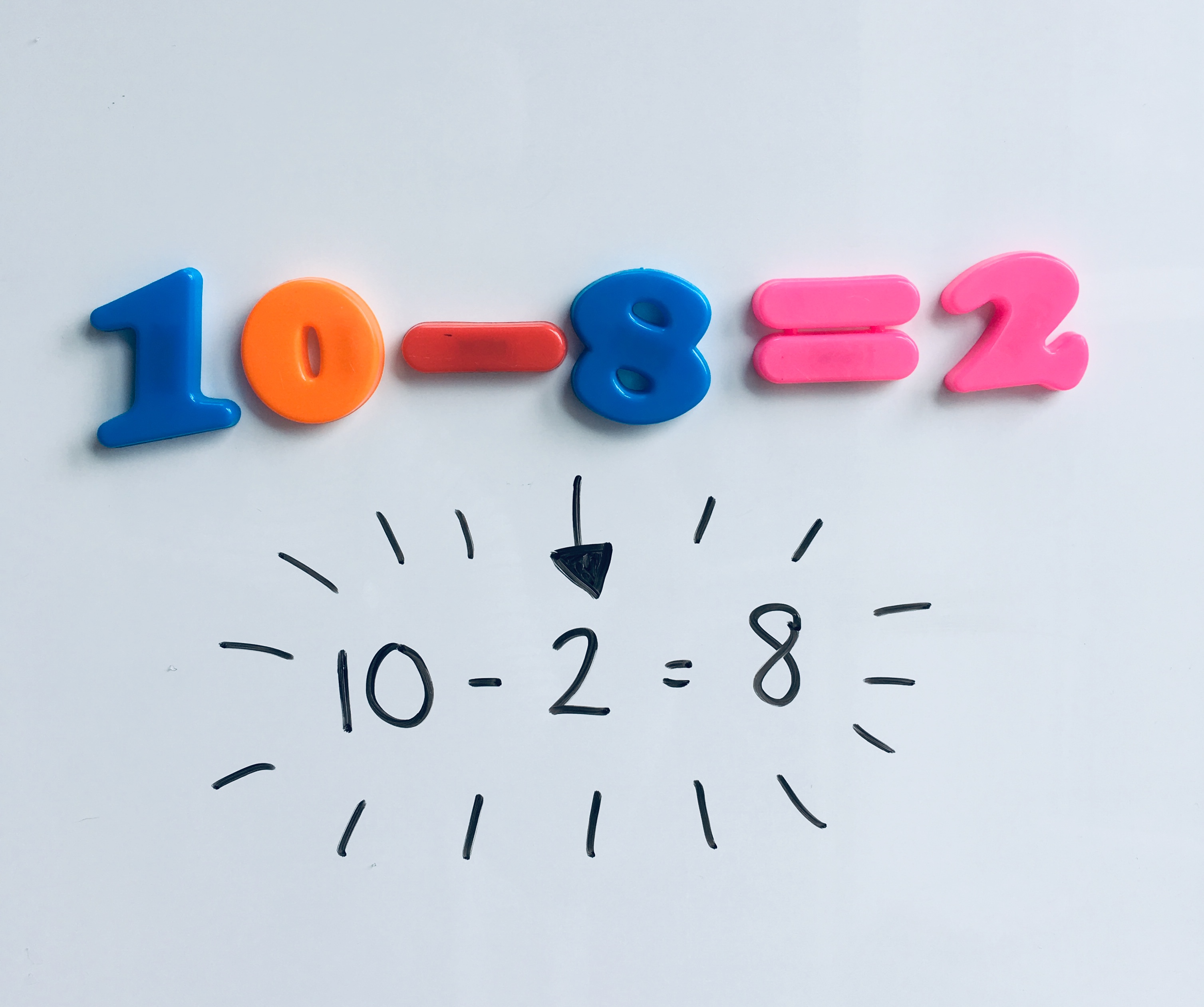Here comes another maths phrase to confuse you. But fear not, it’s really easy when you know how. There are free facts and free is always good! These can also be called Fact Families.
Simply – a group of sums using the same three numbers. Facts for free (or fact families) are a way of helping children to see where they can use a number fact to help them know answers to other facts. For example if we know 8 add 2 makes 10, then we also know that 2 add 8 makes 10. That’s a fact for free, easy!

2+8=10 is a fact for free, yay!
You can find facts for free with subtraction too. With subtraction a useful tip is that the biggest number always has to go at the start. If children find this tricky to understand use objects to start with a total and then take an amount away. They will see that you can’t take 8 from 2 as there aren’t enough.
Here is 10 – 8 = 2 and the fact for free:

10-2=8 is the fact for free, yippee!
For each number sum there are always 3 facts for free because you can use the additions and the subtractions (the inverse.) The inverse means the opposite operation (operation is the process so +, -,x and ÷) If you are adding then the inverse is to subtract and vice versa.
Here are all the facts for free from 8+2=10. Oh and 8 and 2 are also number bonds to 10!

Why?
Facts for free are really helpful, they can add an ‘easiness’ to maths if children understand how to use them properly. If a child isn’t confident to subtract for example 10 – 4, but they know that 6 + 4 makes 10 then they will be able to use this to fill in the gaps. The numbers 10, 6 and 4 can be used in lots of ways. It’s really important that children know that in subtraction sums the biggest number must always come first otherwise they will get confused and might think 6-4=10.
When?
Children will start to learn about facts for free and the inverse of adding and subtracting in Reception, although they might not call it this aged 4! They will start to explore adding sets of objects together and some children might enjoy writing the sums to match. In Year 1 and 2 they will learn to use these skills with larger numbers.
More difficult Maths:
Facts for free can also be used when multiplying or dividing. Numbers can be swapped around and we can use the inverse as I talked about above. Don’t panic, this isn’t taught in Reception. Counting in 10’s is taught in year 1 and then more multiplication and divsion in year 2.
Can you work out a fact for free from 6 x 10 = 60?

The main fact for free is 10 x 6 = 60
Using the inverse of multiplying you can divide to find facts for free. When dividing you have to put the biggest number first (just like with subtraction.)

How?
How can you help your child to understand and use facts for free as part of their maths ‘toolkit?’
Facts for free can be used alongside lots of other games and maths discussion. It’s a phrase you can use when talking about maths with your child. You could set up some magnetic numbers and see if children can alter them around to make all of the facts for free just like the pictures above. You could say a fact and children earn a point for each fact for free that they can tell you.
Below is a link to an online game where children can put the numbers and symbols into a grid to show all of the facts for free with a set of 3 numbers. You can help them to choose how difficult it is including adding and subtracting or multiplying and dividing.
We hope this has helped you to understand more about ‘facts for free’ or ‘fact families’. There are more ideas on our instagram page for how to help your children at home. Any questions ask us in the comments or contact us via instagram!

